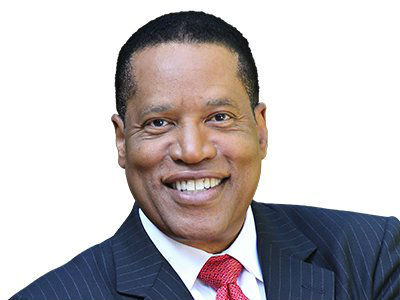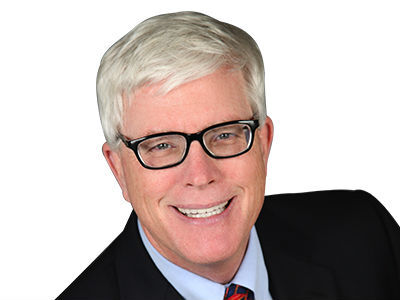Aging at home: How families and care teams are meeting the rising demand for in-home support
Lifestyle

Audio By Carbonatix
2:00 PM on Wednesday, November 5
By Trevor Mahoney for QMedic, Stacker
Aging at home: How families and care teams are meeting the rising demand for in-home support
Across the country, older adults and their families share a common goal: the ability to live safely, independently, and confidently at home. The demand for home- and community-based services (HCBS) continues to grow, driven by an aging population and the desire for greater comfort, connection, and autonomy.
States, managed care organizations (MCOs), and local agencies are responding with innovative solutions, expanding services, integrating technology, and empowering caregivers. While some states face challenges with workforce capacity or administrative backlogs, the overall trend points toward progress through collaboration and proactive planning.
QMedic analyzed data from the National PACE Association, KFF, The Commonwealth Fund, and other reputable sources to highlight five states experiencing rising demand for home-based care, and how families and care teams can take practical steps to stay supported.
1. Texas: Building Capacity Through Collaboration
Texas has one of the fastest-growing populations of older adults in the country, creating an increased need for in-home services and long-term care supports. While demand remains high, state agencies and MCO partners are working together to streamline access, improve workforce training, and connect more people to care.
What families can do:
- Connect with your MCO case manager to explore available Medicaid waiver programs and state plan personal care services.
- Contact your Area Agency on Aging to ask about community vouchers or local nonprofit support.
- Consider Programs of All-Inclusive Care for the Elderly (PACE) as a supplemental resource for comprehensive medical and social support when eligible.
2. California: Coordinating Care Across Regions
California’s decentralized structure, with 30 regional HCBS waitlists, can make navigating the system complex. Yet it also offers families more options. The state’s large network of In-Home Supportive Services (IHSS) programs, MCO-led coordination, and strong PACE infrastructure make it one of the most resource-rich environments for aging at home.
What families can do:
- Ask your MCO for regional guidance — they can identify shorter waitlists or overlapping eligibility across counties.
- Apply for In-Home Supportive Services (IHSS) as an interim solution while awaiting long-term coverage.
- Review the HCBA Waiver Enrollment Dashboard for monthly updates and openings.
- Explore local PACE programs, which offer integrated, person-centered care for eligible participants.
3. Florida: Preparing for Growth in the Sunshine State
With a booming retiree population and climate-related migration, Florida’s need for qualified home care workers and care coordination continues to grow. In response, MCOs and local agencies are increasing outreach, piloting caregiver training programs, and reinforcing emergency preparedness for seniors who live independently.
What families can do:
- Partner with your MCO early to explore home care, respite, or personal support services available under your plan.
- Inquire about disaster-preparedness assistance or emergency Medicaid coverage for hurricane-impacted members.
- Explore local caregiver respite programs or adult day centers that provide temporary relief and social engagement.
- Consider PACE programs where available for individuals needing integrated, wraparound care.
4. South Carolina: Expanding Rural Reach Through Innovation
In South Carolina, the challenge isn’t only about demand, it’s about distance. Many rural families live far from provider networks, making access to care more complex. But statewide initiatives, MCO-driven telehealth solutions, and community-based programs are closing those gaps.
What families can do:
- Apply for the South Carolina Respite Voucher Program, which provides financial support for family caregivers.
- Leverage telehealth services through your MCO or primary care provider for routine check-ins and follow-ups.
- Engage with local organizations, such as churches or senior centers, that offer volunteer companion or transportation programs.
- Ask about remote monitoring solutions.
5. Pennsylvania: Strengthening the Direct Care Workforce
Pennsylvania is home to one of the most robust networks of managed care and community support programs for older adults. While staffing shortages have created longer wait times for certain waiver services, MCOs and state partners are investing heavily in workforce recruitment, retention, and caregiver education.
What families can do:
- Collaborate with your MCO care coordinator to identify alternative waiver options or interim personal care services.
- Explore adult day health centers for safe social engagement and temporary respite.
- Look into PACE programs — Pennsylvania’s network is among the largest in the U.S. and serves thousands of participants statewide.
- Check for Lifespan Respite grants to offset temporary caregiving costs.
Universal Steps to Stay Supported
Every state’s system and service structure are unique, but a few universal principles can help families stay ahead:
Within 30 Days: Take Immediate Action
- Apply for every eligible program through your MCO, Area Agency on Aging, or Medicaid office.
- Keep records of all calls, applications, and responses, it helps streamline future requests.
Within 90 Days: Plan Financially
- Review your MCO benefits for coverage of personal care or respite.
- Consider private-pay options or short-term care as an interim bridge.
- Explore financing for home modifications such as ramps, grab bars, or fall-prevention devices.
Within 12 Months: Build Your Long-Term Support Network
- Reevaluate your loved one’s needs and eligibility every quarter.
- Connect with community-based services, adult day centers, or volunteer programs.
- Develop a contingency plan for transitions should needs change.
This story was produced by QMedic and reviewed and distributed by Stacker.

























